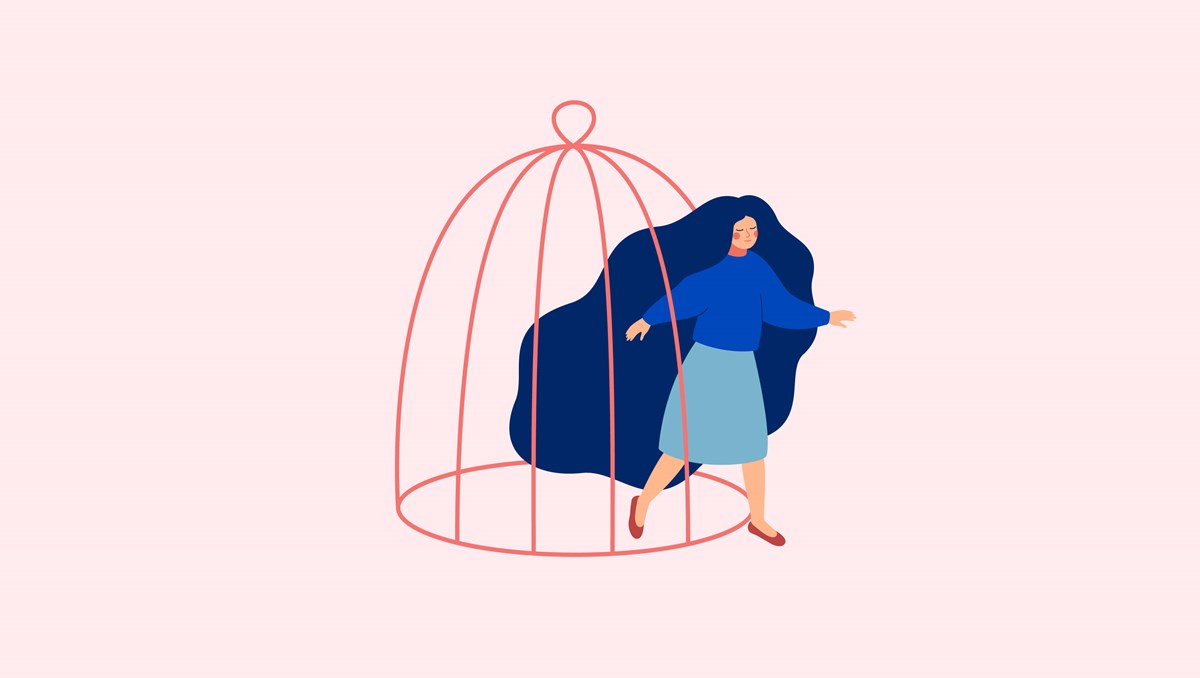How can middle leaders beat burnout?
Burnout is real and it affects teachers everyday. In this blog we talk to middle leader Bethan Ware, who offers tips and examines what middle leaders can do to avoid burnout.
Articles / 7 mins read

 Created in partnership with Twinkl Leaders Team
Created in partnership with Twinkl Leaders Team
We examine what exactly burnout is, how to spot the signs of burnout and, most importantly of all, what we can do to make sure we avoid burnout before becoming burnt out.
We caught up recently with Bethan Ware – primary school leader and the face behind @tenminuteteach on Instagram – to talk about how middle leaders can beat burnout before it beats them.
What is burnout?
You have probably heard the word ‘burnout’ bandied around the staffroom and corridors of school, especially at the end of the long autumn term as nights draw in and the Christmas holidays still seem out of reach, or in the summer term when end of year assessments, report writing and transition arrangements stack up. However, burnout is so much more than a throwaway comment or description of ‘teacher tiredness’. According to the World Health Organisation:
“Burn-out is a syndrome conceptualized as resulting from chronic workplace stress that has not been successfully managed...” (WHO, 2023)
When we chatted recently, Bethan summed it up well, describing how, in teachers, burnout often manifests as “a genuine feeling of exhaustion and overwhelming pressure” and, specifically in the case of middle leaders, she explains that, “it’s that overwhelming sense of so much to do” and not necessarily having the time or the energy to complete everything, or being unable to plan and prioritise what to do. This overwhelming sense of pressure can often be put on middle leaders from those above as they themselves attempt to manage their workload and the pressures of their own accountability.
What are the signs and symptoms of burnout?
Bethan described the signs of burnout as being a change in demeanour: someone who is usually happy and outgoing may show signs of a low mood and lack of enthusiasm. Equally, a previously calm person may become easily excitable and in an unusually high mood. Other common signs in yourself (and others) that Bethan noted are tiredness, being unable to enjoy things that you may have done previously and that all too familiar feeling of ‘Sunday night dread’ becoming overwhelming and unconquerable.
The trouble with burnout in teachers in particular, Bethan stated, is that it can all too often be worn as a badge of honour and be seen as being a positive trait or essential for success. It can normalise working beyond what is healthy. You may recognise this in teachers you’ve worked with.
But what can middle leaders do to help prevent themselves, and their colleagues, becoming burnt out in the first place?
How can middle leaders in particular avoid burning themselves out?
If we are aware of burnout and what is normal in ourselves – and those we work with – it is easier to spot. Lots of teachers and leaders wait until they are experiencing burnout to make changes. “It is vital to try to put things in place to avoid burnout happening in the first place," says Bethan.
In order to avoid burnout, we need to become self-reflective, know what our normal is and be aware when we are no longer there. On top of this, proactive strategies to manage workload actively prevent middle leaders from burning out.
One strategy that Bethan shared with me was compartmentalising tasks to help prevent that feeling of being overwhelmed, splitting them up into manageable sections that can be ticked off. Bethan suggested a handy quadrant to manage an overwhelming workload, both at school and at home. It helps you to sort tasks into four areas, for example classroom tasks, management or leadership tasks, home-life tasks and personal wellbeing tasks.
In the morning, split that long to-do list up into small, achievable jobs that you can tick off by the end of the day, not forgetting to include something for your own wellbeing, be that a visit to the gym, reading a book – whatever will help your personal wellbeing.
Incidentally, if you are interested in how to manage stress through personal wellbeing, then this Education Support blog taken from Bethan's advice could help:
By sorting tasks into these sections, you can set time aside to complete each one without trying to multitask and becoming overwhelmed. She also highlighted that it is beneficial to write things down as soon as you know you need to do them, ready to be sorted and compartmentalised later. She observed that, quite often, middle leaders can “get given things when you’re teaching a maths lesson, something gets thrown at you that is a management job” and it’s a good idea to write it down to come back to later; she always carries her planner with her for such an eventuality.
How can middle leaders prepare for a new school year?
First of all, Bethan said it is really important to set yourself boundaries and spend time reflecting and evaluating what is important for you to succeed in your role, what you can reasonably do to achieve this and what can be compromised. This is especially important if you are starting a new job or role. Establishing personal boundaries at the beginning makes it easy to manage workload and say no later on, preventing the potential of becoming overwhelmed further down the line.
Secondly, Bethan suggested that middle leaders should look at building a support network around them for when they need it. This could be nationally through social media, such as Facebook and Instagram groups, or in person through local cluster meetings. By having a network of middle leaders in similar roles and positions, you will always have someone to share ideas with and vent to when needed. By having both national and local networks, you can easily gain a wide range of ideas and responses as well as contribute to supporting others in the same way.
What can middle leaders do to prevent burnout in their school?
As well as being able to manage their own wellbeing and prevent burnout, middle leaders are in the unique position of being able to influence school culture and burnout prevention by having a direct line to SLT. Although a middle leader may not have the power to affect change on a whole-school level, they can start making a change by speaking up or, as Bethan put it, ‘start The Movement’. She believes that a culture shift away from the toxic positivity of burnout within a single school can start with middle leaders modelling what it means to prioritise wellbeing and simultaneously encouraging SLT to do the same.
For example, middle leaders should be open in saying they are going home early one evening or sharing how they have other things to do outside of their school work. But, at the same time, understand that everyone has a work schedule that works for them and to not judge others who choose to stay late or go home early, instead being aware of colleagues’ ‘normals’ and recognising when these change. Building on the self-awareness mentioned earlier, middle leaders can spot signs of burnout in others too by acknowledging that everyone manages their workload in their own way.
Bethan also said that this openness extends to being confident enough to say, “I’m feeling very overwhelmed at the moment… I know you must be feeling it because I feel it too.”’ By opening up those conversations about workload, you are normalising not being able to do everything.
By talking openly, middle leaders are role-modelling good wellbeing. This gives staff the confidence that it’s ok to say you cannot do it all and it’s not a sign of failure. By doing so, the culture in a school can shift from one of seeing burnout as a sign of success to celebrating wellbeing and positively managing workloads.
You may find our resources might help you to further spot the signs of burnout, prevent it and protect yourself:
Where can middle leaders get further help and support?
Remember, prevention is better than cure. Make changes for yourself and speak openly about challenges you may face. Be self-aware and advocate for yourself; you will be able to more effectively manage workload and prevent burnout.
However, if you are feeling the effects of a demanding workload and feel you may become, or are already, burnt out, remember that there is help out there. Education Support has been supporting teacher and education staff wellbeing for 146 years. Call our helpline on 08000 562 561 for immediate, confidential emotional support. You can visit our social channels for the latest updates on news, resources and events - @edsupportuk.
Bethan Ware is a primary school middle leader, leading key stage 2 and can be found on Instagram as @tenminnuteteach. She has plenty of tips and ideas for wellbeing, beating stress, career progression and more, updated regularly.

Don’t wait for a crisis to call.
We’ll offer you immediate, emotional support.
08000 562 561

Sign up to our newsletter for the latest mental heath and wellbeing resources, news and events straight to your inbox.





















